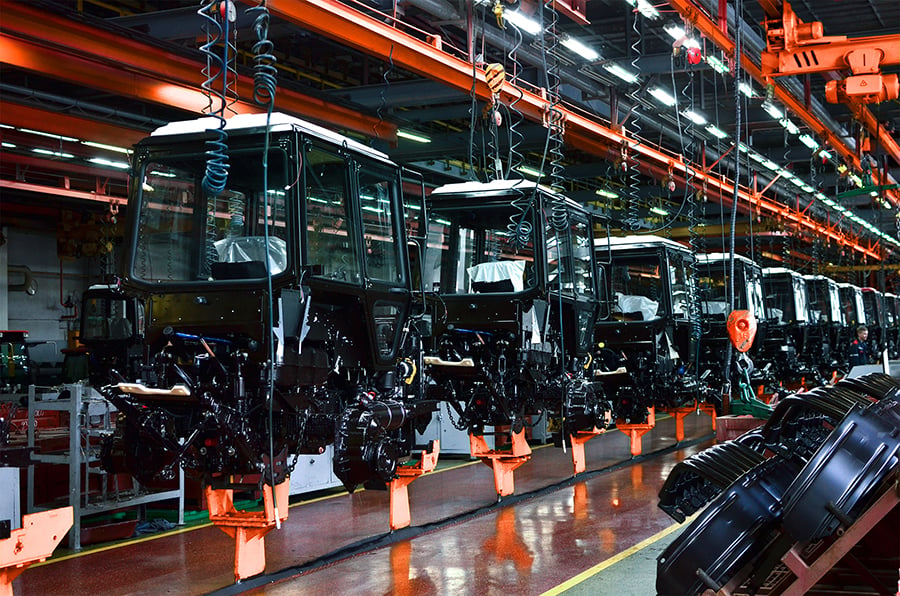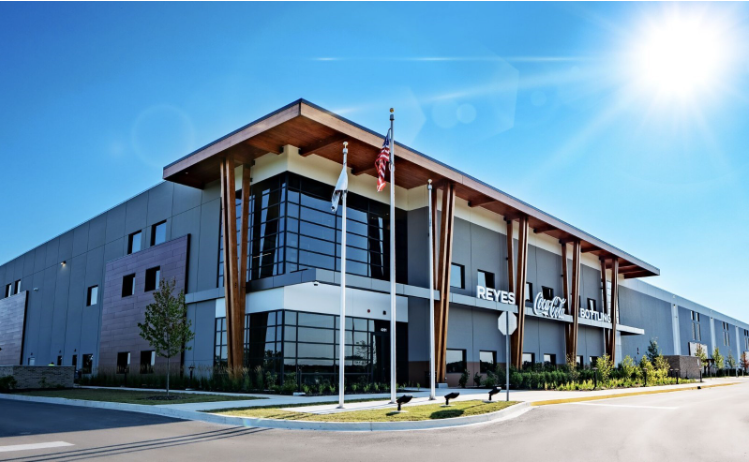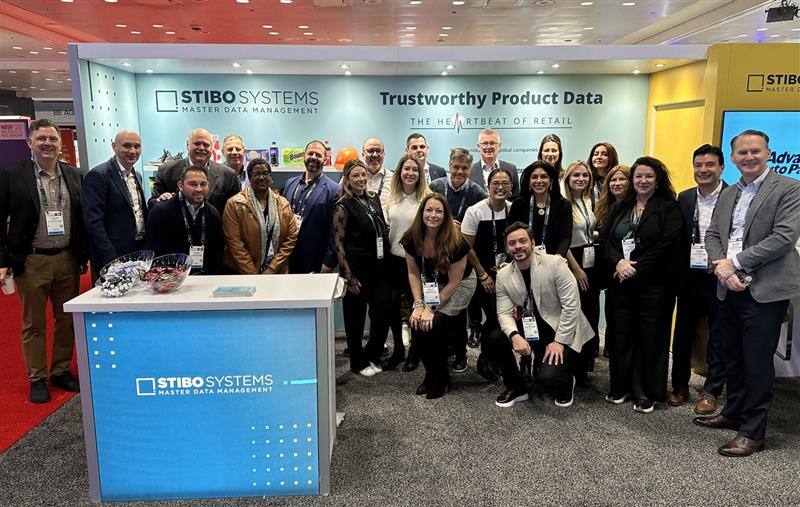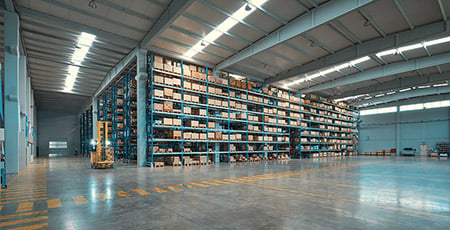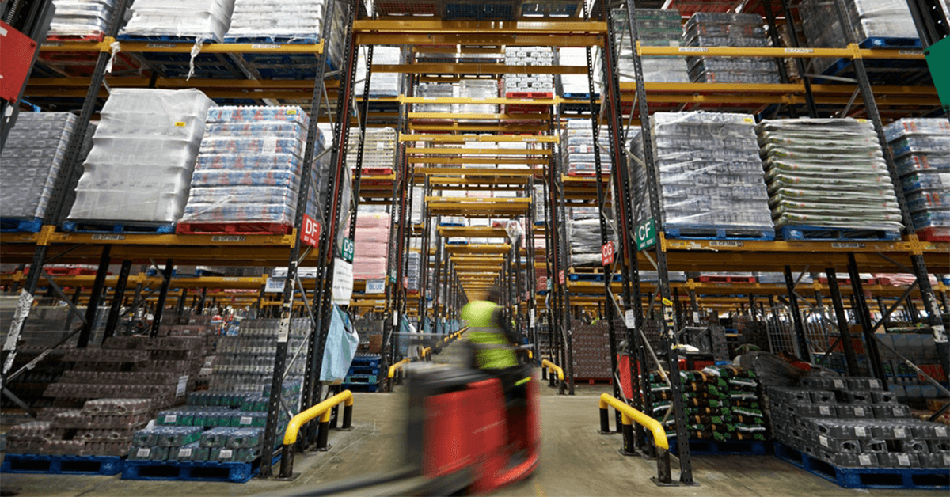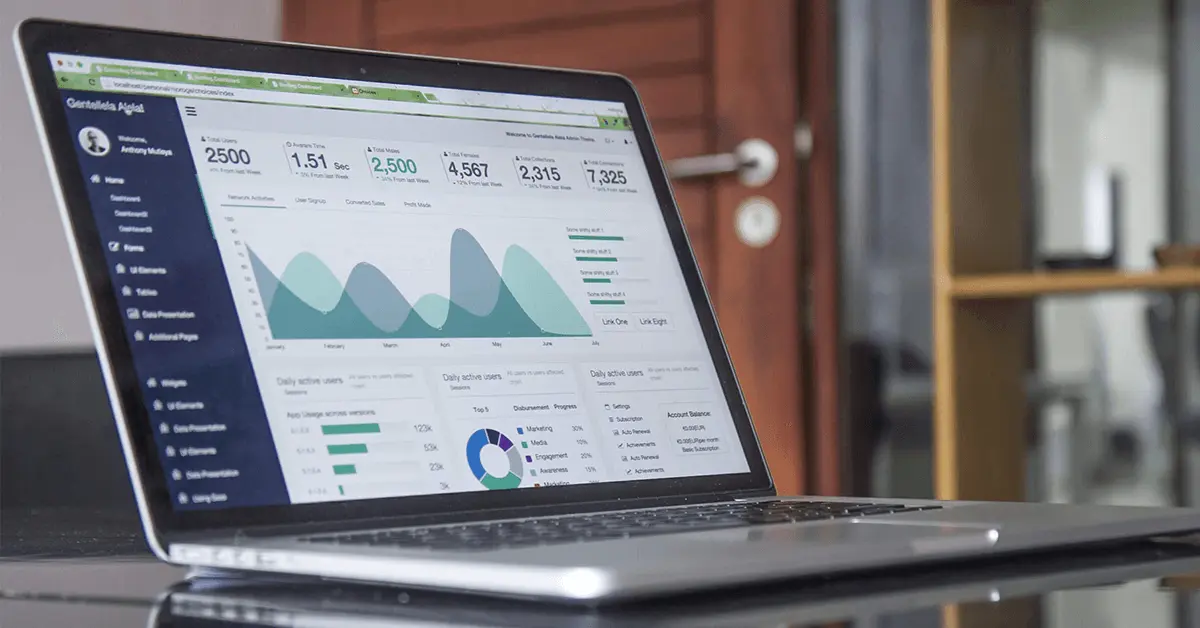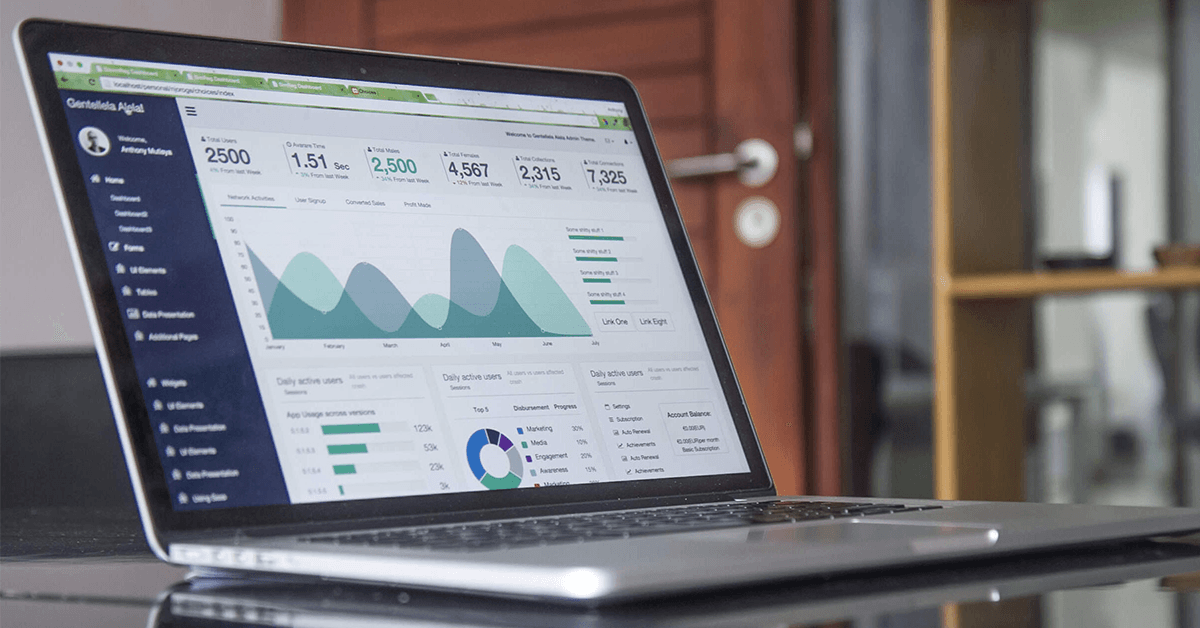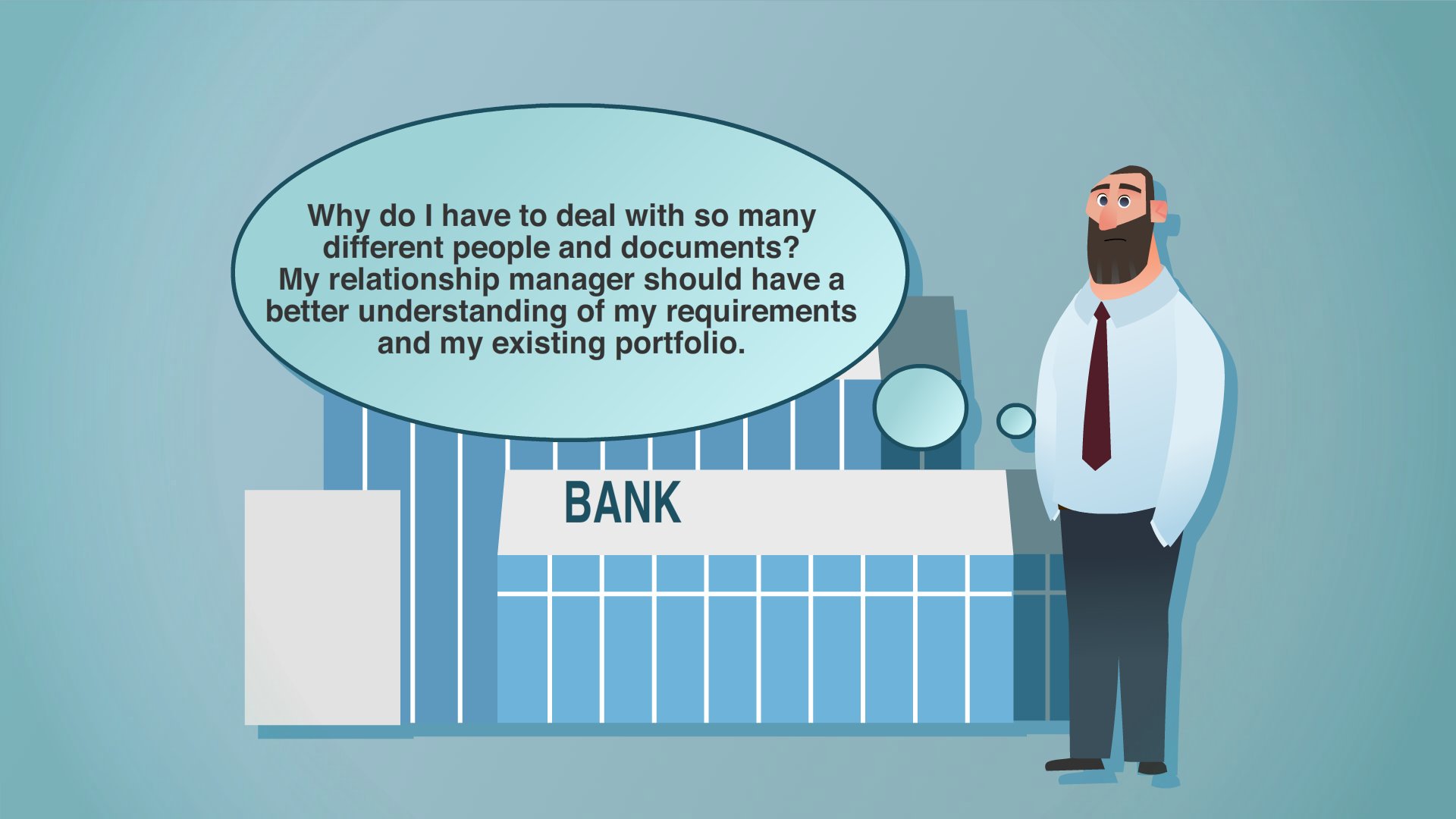While "digital transformation" has been a buzzword for years now, the pressure for manufacturers to modernize through automation and increased digitization has been growing over the past few decades.
Digital transformation and modernization are no longer just buzzwords — they're strategic drivers of sustainable business growth and tools to help you stay competitive in the long run.
98% of 800 surveyed manufacturers have started their digital transformation journey, compared with 78% in 2019.Source: *Deloitte’s 2023 Digital Maturity Index survey
But digital transformation isn't a one-time thing. You need to continually adapt and evolve as technologies (like AI) do. It's an ongoing process — but can you modernize without constant disruption?
We get it. The stakes are high, and any production disruption could jeopardize productivity, lead to lost revenue and missed delivery windows and even compromise safety and quality.
And with priorities that require smooth operations — throughput, efficiency, uptime — pausing production to overhaul your data systems can feel daunting.
The good news? Modernization doesn't have to halt production.
We're exploring non-disruptive digital transformation in manufacturing, including how you can rebuild your data infrastructure without slowing operations or production. How? By using data modernization strategies that preserve continuity — all while delivering even more efficient and scalable operations.
Quick insights
- 98% of manufacturers have begun digital transformation, but many still struggle to modernize without disrupting production.
- Legacy systems and manual processes are the biggest barriers to modernization — creating bottlenecks, slowing throughput and limiting scalability.
- Modernization doesn’t have to mean starting over — layering a unified data foundation on top of existing systems preserves continuity while improving visibility and governance.
- Real-time visibility across assets and locations helps you identify bottlenecks early, schedule maintenance proactively and trace quality issues to their source.
- Scalable architecture supports growth by onboarding new assets, locations and acquisitions without bloating your tech stack.
- Interoperability between ERP, MES and PLM systems eliminates silos and allows for seamless data flow across departments.
- Standardized and governed data improves safety compliance, reduces defects and enhances forecasting accuracy.
- Manufacturers using smart initiatives report 10–20% higher output and 7–20% better productivity, emphasizing the ROI of modernization.
- Industry 4.0 and 5.0 aren’t optional — they’re the future. Ignoring them risks falling behind competitors who are already scaling with AI and advanced data strategies.
Is modernization too risky for manufacturers?
While there are risks, the risk of not modernizing is greater, like falling behind, operational inefficiencies and scalability hurdles. As an operational leader, you have to get product out the door, with limited downtime — and fast.
But your legacy systems create bottlenecks, and manual processes slow you down even more. And chances are that you've at least started digital transformation.
With promises of increased production and efficiencies, it makes sense. But if you're like many other manufacturers struggling to modernize without disruption, you may have struggled to realize the benefits of it.
You might not have achieved any of what you hoped for, or maybe you only saw part of the expected ROI. It's easy to ignore the hype and move on. That'd be a mistake. Industry 4.0 and 5.0 are the way forward — those ignoring these transformations will get left behind.
Does your organization have the level of data maturity needed to modernize?

Industry 4.0 and 5.0 are how manufacturers modernize. They're focused on integrating advanced technologies and big data into the manufacturing industry while prioritizing human safety, sustainability and human-machine collaboration.
So, while moving toward Industry 4.0 or 5.0 can feel risky, you put far more at risk by not modernizing.
Potential barriers to disruption-free modernization
Part of the reason data modernization strategies feel so daunting and risky is because there's no shortage of hurdles to overcome, like:
- Too many disconnected systems and logins
- A lack of interoperability between departments and platforms
- Manual processes and data silos
- Legacy systems that limit scalability and automation
These hurdles make it feel like a high-risk and daunting undertaking. But trust us — with the right approach, you can leverage data modernization strategies for manufacturing operations that don’t require destroying everything or excessive downtime.
Manufacturing companies that have implemented smart manufacturing initiatives have seen an average 10-20% improvement in production output and 7-20% improvement in employee productivity.Source: *2025 Smart Manufacturing and Operations Survey: Navigating challenges to implementation
What “modernizing without disruption” really means
So, is modernizing manufacturing data without halting production actually possible? And if so, what does it look like?
James Taylor, Chief Commercial Officer at OnRobot, sums up why some manufacturers are becoming jaded or hesitant to embrace full digital transformation:
"Manufacturers don’t need promises of science fiction; they need practical, flexible solutions that deliver value today."
He's right — you need real results and minimal disruption. The good news? Modernization doesn't mean tearing out your existing infrastructure and forcing your entire workforce to relearn everything. Or excessive downtime and lost productivity. Here's what it does mean:
- Digital transformation that builds on what's already working instead of starting over
- A seamless, non-invasive integration with your existing infrastructure that layers new capabilities
- Extending the value of your systems (vs. replacing them) by adding a unified data layer that provides better visibility, scalability and governance (ensuring standardized, accurate and trustworthy data)
- Cross-departmental collaboration that allows teams to use the tools they already know while benefiting from standardized, governed data that flows smoothly between departments and systems
These are foundational elements of non-disruptive digital transformation in manufacturing — and they make modernization easier to achieve than you might think.
5 strategies for seamless data modernization
"Data modernization" sounds like a massive and risky undertaking that requires countless steps and lots of change. But if you work with the right partner and follow these five steps, you can minimize downtime and disruptions.

1. Establish a unified data foundation
Modernizing manufacturing data without halting production starts with creating a solid, unified foundation to work from. It allows you to layer new tools on a strong base instead of just adding them on top of old problems.
So, what does that strong data foundation look like?
Standardizing and governing your data across assets, materials and processes, so everyone — department, system, stakeholder — is working from the same single source of truth. This foundation gets rid of silos, reducing errors and giving you real-time visibility across operations.
Just look at the numbers. McKinsey found that manufacturing organizations that adopt advanced technologies, like centralized data platforms, saw impressive gains, like:
- 30-50% reduction in machine downtime
- 10-30% increases in throughput
- 15-30% improvements in labor productivity
- 85% more accurate forecasting
Modernization isn't just about efficiency gains — it's how your competitors are getting ahead.
And you don't have to start from scratch to reap the benefits. You can build a unified data foundation using a non-invasive integration approach that extends the value of your legacy ERP, MES and PLM systems. How? By layering a governed data foundation that connects everything.
This approach supports:
- Scalability. Easily onboard new assets, locations or acquired divisions.
- AI-readiness. Give your AI models clean, standardized data to work from for predictive insights.
- Compliance. Ensure consistent, auditable data for safety, quality and regulatory reporting.
Need help standardizing and unifying manufacturing data?
See how Stibo Systems Platform helps operations teams do precisely that without pausing production.

2. Automate manual workflows
You already know — manual processes slow things down and impact the bottom line more than almost anything else. From managing bills of materials (BOMs) to tracking repairs and quality checks, these repetitive tasks slow production, introduce errors and drain valuable resources.
That's where automation comes into play. Yes, it speeds things up, but more importantly, automating manual processes helps reduce delays, eliminate redundant data entry and reliably execute critical processes — like quality control and maintenance.
And you can see the impact immediately, including:
- Repair and maintenance tracking. Automatically log and schedule maintenance tasks to reduce unplanned downtime.
- Quality assurance. Standardize inspections and reporting to catch defects early and reduce rework.
- BOM management. Sync BOM updates across enterprise-wide systems to ensure production teams always have the latest specs — no more chasing down spreadsheets or outdated PDFs.
The best part? Stibo Systems integrates with your existing tech stack — ERP, MES, PLM — so there's no overhaul needed. Simply put, Stibo Systems Platform supports automated workflows that streamline operations while reducing the risk of human error — no production disruptions.
3. Improve visibility across assets and locations
No matter how good your data modernization strategies are, you won't get much use out of them if you lack real-time insights and visibility into assets, equipment or production lines across multiple locations.
Instead of taking a proactive, preventative approach to solving problems, you're stuck reacting — increasing the likelihood of downtime. Even the smallest bottleneck or delay can jumpstart a ripple effect across the entire supply chain.
To improve that much-needed visibility, you need to connect data across your systems into a single, governed layer that provides a real-time view of what's happening on the shop floor and across facilities. Doing so allows you to:
- Identify bottlenecks before they negatively impact throughput
- Spot downtime trends and proactively schedule maintenance
- Track quality issues — whether it’s a machine, material or process — back to the source so you can remedy it
By connecting your systems and standardizing your data, you get the real-time visibility required to make smarter, faster decisions — before issues escalate.
By connecting your systems and standardizing your data, you get the real-time visibility required to make smarter, faster decisions — before issues escalate.
4. Support future growth with a scalable architecture
Modernization is the way of the future for manufacturers, but it's not quite as simple as getting everyone on board and purchasing new technologies. You need a data architecture that can support digital transformation and scale with you.
The problem? Your rigid legacy systems that weren't built to evolve. That's why modernization is such a high priority for operations leaders looking to:
- Increase efficiency across the board
- Support interoperability
- Reduce downtime and limit disruptions
- Limit quality and compliance challenges
But scalability is about more than just handling more data. Your architecture needs to support more complexity, more change and more opportunity without slowing you down.
A flexible, future-ready architecture lets you adapt to whatever's next — from onboarding new systems and integrating acquisitions to embracing AI and Industry 5.0.
When your data foundation is built to scale, growth doesn’t have to mean disruption.
5. Enable system interoperability
Data modernization strategies for manufacturing operations rely on trustworthy data, automation and smooth communication between systems. Take any of these elements out, and it doesn't work. That's why many manufacturers have struggled with modernization: they patchwork legacy systems that were never meant to work together.
The result? Data silos, duplicate data, an incomplete view of your data and manual workarounds that slow or fully stop operations.
Interoperability addresses all of these challenges by connecting systems through APIs, connectors and a unified data layer. Instead of disconnected data that creates confusion and delays, you create a seamless data flow between systems and departments. When you achieve interoperability:
- There's no more rekeying data between systems
- You can make decisions faster with real-time, cross-functional insights
- You see stronger collaboration between teams using different tools
It helps you be more resilient by allowing you to onboard new tools and adapt to change without disrupting operations.
What to expect when you put data modernization strategies into practice
We often think of modernization as replacing legacy systems with shiny new technologies, but the reality is that modernization is more than just a tech upgrade — it's a strategic business play to drive innovation and growth.
And when you execute the right data modernization strategies, you get impactful results that support long-term growth. Take a look at just a few of the outcomes you can expect when you modernize your manufacturing data.

Increased throughput and reduced downtime
When you're working with standardized, governed data that flows effortlessly between systems and teams, you can quickly identify bottlenecks and respond before they escalate into serious problems or delays.
And the real-time visibility into your assets and operations helps you be proactive, reducing unplanned downtime while optimizing production schedules.
Fewer defects and rejections
Standardized and governed data is inherently higher quality. So when you have that high-quality data and can centralize and make it accessible, it becomes far easier to enforce standards and catch inconsistencies early on.
That means fewer errors, less rework and more consistent product quality — all of which is especially critical in regulated, high-precision manufacturing environments.
Improved safety compliance
Centralized documentation and automated workflows make sure your safety protocols, training records and maintenance logs are up to date — greatly reducing the risk of non-compliance. In turn, this helps you avoid hefty fines or incidents.
Scalability without the bloated tech stack
It's not uncommon to outgrow your systems, or worse, purchase new software that simply doesn't work with existing tools. Every time your business evolves, you're stuck buying yet another software.
You need a platform that adapts with you — not the other way around. That's exactly what a modern, agnostic data platform does. It can ingest and model data from any source, making it easier to scale operations, onboard new assets or integrate acquisitions without adding to your bloated tech stack.
Better collaboration and alignment
When departments — from procurement to production to logistics — work from the same golden record, you make collaboration seamless. Instead of data silos and fragmented data, teams can automatically acquire, manage and share information, regardless of formatting.
This collaboration allows you to act on data in real time, limiting miscommunications and manual handoffs.
Fewer shipping delays and customer issues
Accurate, trustworthy data makes sure you meet packaging, labeling and shipping requirements every time — this reduces logistics hold-ups due to incorrect packaging or dock procedures while boosting customer satisfaction.
Embracing modernization without operational disruptions
Modernizing manufacturing data is absolutely possible without costly disruptions or downtime. When you use data modernization strategies, you can build on top of what's working instead of completely starting over.
By layering in a unified data foundation, you gain the visibility, governance and scalability you need to stay competitive — without suspending production or overwhelming your teams. It’s a smarter, more sustainable path to digital transformation that helps manufacturers be more resilient and agile.
Need help modernizing manufacturing data without halting production?
See how our Product Experience Data Cloud helps manufacturers like you unify, govern and activate your data — without disruption.




























